Introduction
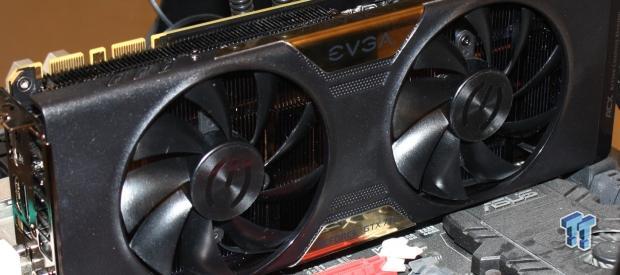
The EVGA GTX 770 2GB SuperClocked ACX has been sitting around for longer than I would've liked and that's annoyed me for two reasons. One, I don't really like samples sitting around for too long, but due to the video card arriving just before Computex and just before the Haswell launch, it unfortunately ended up taking a bit of a back seat. The second thing is that the card just looks so cool. I'm a sucker for anything gold and as soon as I saw the gold highlights on the model, which can be seen above in the introduction picture, I fell in love with the look.
Today, though, none of that matters as we slide it into our testbed and find out just what exactly the model is about. This is the first non-reference GTX 770 2GB that we've looked at and we're excited to see how it compares to the reference model which we've looked at in both its stock form and overclocked form.
Because of that we've actually decided to look at the EVGA offering overclocked. We'll be taking the good ole' EVGA Precision overclocking tool out for a spin today to find out just what kind of performance we're able to get out of the model. What we really want to know is as we move away from the reference cooler and onto the new ACX cooler that EVGA is offering, are we able to achieve a stronger overclock than what we saw out of the reference design card.
While normally we would move on from here into the package, we do have to note that the particular review sample we got today didn't come with a bundle - instead it was just the video card itself.
The Card and Specifications
The Card

The new ACX cooler looks great and you can see the dual fan setup. Behind you can see an absolutely massive heatsink that goes from the top to the bottom and the front to the back. Across the top and the bottom you can see the brand and model on a gold backplate, while the right hand side shows off the ACX Active Cooling Xtreme logo on the edge.

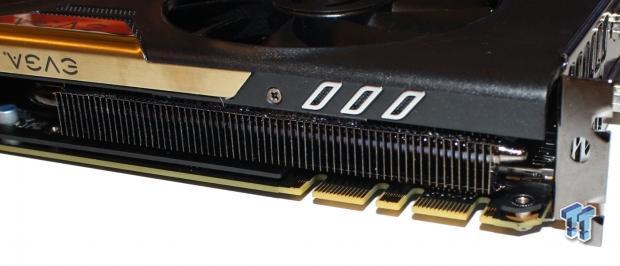
We can see that the power connection setup is the same as the reference design with a single 8-pin and 6-pin PCIe power connector at the back. Heading to the front you can see two SLI connectors. Also while looking across the top of the card you can see the extension of that gold plate across the top of the card along with a closer look at the massive heatsink that is present across the whole card.
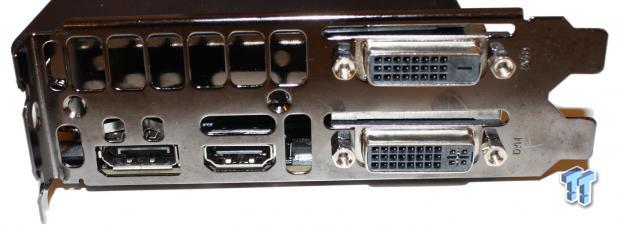
The I/O side really doesn't hold any surprises at all. On the far right we've got two Dual-Link DVI connectors in the form of a DVI-D and a DVI-I. As for the bottom left hand side can see a HDMI and DisplayPort connector to round things off. You can also see a number of holes in the backplate to help as much air escape out the back of the case as possible.
Specifications
Being part of the SuperClocked series means that out of the box the card comes overclocked. What we love, though, is that EVGA is one of those companies that doesn't just slap on some fancy looking "overclocked" title and then bump the core up by 20MHz.
Instead, looking below, you can see the core comes in at 1111MHz, which is up from the stock 1046MHz. Of course that means the boost clock has also been increased from the standard 1085MHz to a more impressive 1163MHz. Like we see from most companies EVGA has chosen to not touch the memory clocking leaving the 2GB of GDDR5 at its stock 7010MHz QDR clock, but that doesn't mean we're going to ignore it.

Looking above you can see we managed to push the core up to an even 1200MHz, which pushes the boost clock to 1252MHz. This compared to the reference card which we overclocked to 1153MHz on the core and pushed the boost clock up to 1192MHz.
As for the 2GB of GDDR5 we managed to bump that up to 7600MHz QDR. This is 64MHz lower than what we saw out of the reference card, but it's worth nothing that an extra 10MHz on the core gives us a much greater gaming performance increase than 20MHz QDR extra on the memory.
Benchmarks - Test System Setup

We would like to thank the following companies for supplying and supporting us with our test system hardware and equipment: Intel, ASUS and Corsair.
Today we'll be comparing the EVGA GTX 770 2GB SuperClocked ACX against the reference GTX 770 2GB at stock and at 1153MHz / 7664MHz QDR to see how the overclocked card performs against both the stock clocked card and the best clocks we could get out of the reference clocked version.
Along with the GTX 770 2GB setups, we've also got two reference GTX 650 Ti Boost cards in SLI, along with the reference GTX 780 3GB. On the AMD side of things we've included the PowerColor HD 7950 2GB which we've overclocked to over 1100MHz on the core, along with the reference HD 7970 GHz Edition to round things off today.
I want to mention the edition of the latest 3DMark in the form of the Fire Strike benchmark. Along with that we've also dropped Metro 2033 and replaced it with the newly released Metro Last Light. It has replaced the standard resolution and AA / AF Metro 2033 tests.
The FPS Numbers Explained
When we benchmark our video cards and look at the graphs, we aim to get to a certain level of FPS which we consider playable. While many may argue that the human eye can't see over 24 FPS or 30 FPS, any true gamer will tell you that as we climb higher in Frames Per Seconds (FPS), the overall gameplay feels smoother. There are three numbers we're looking out for when it comes to our benchmarks.
30 FPS - It's the minimum number we aim for when it comes to games. If you're not dropping below 30 FPS during games, you're going to have a nice and smooth gaming experience. The ideal situation is that even in a heavy fire fight, the minimum stays above 30 FPS making sure that you can continue to aim easily or turn the corner with no dramas.
60 FPS - It's the average we look for when we don't have a minimum coming at us. If we're getting an average of 60 FPS, we should have a minimum of 30 FPS or better and as mentioned above, it means we've got some smooth game play happening.
120 FPS - The new number that we've been hunting down over recent months. If you're the owner of a 120 Hz monitor, to get the most out of it you want to get around the 120 FPS mark. Moving from 60 FPS / 60 Hz to 120 FPS / 120 Hz brings with it a certain fluidity that can't really be explained, but instead has to be experienced. Of course, if you're buying a 120 Hz monitor to take advantage of 3D, an average of 120 FPS in our benchmark means that in 3D you will have an average of 60 FPS, which again means you should expect some smooth gameplay.
Why are some graphs incomplete?
Adding new game benchmarks is a long, tedious and time consuming task as every video card has to be re-tested in those new benchmarks. Because of that reason we have always just evaluated our benchmark line up every six months. To stay up to date and current with the latest benchmarks and games available, we've changed our approach to adding new benchmarks.
Our benchmark line up will progress and be updated as newer more intensive games with benchmarks comes to light. While this will mean that initially you may only see a single video card in those particular graphs, as the weeks go on and we test more and more video cards, the results will grow quickly. This will help keep our benchmark line up as up to date as possible as we introduce and remove games on a constant basis.
Benchmarks - 3DMark 11
3DMark 11
Version and / or Patch Used: 1.1
Developer Homepage: http://www.futuremark.com
Product Homepage: http://www.3dmark.com/3dmark11/
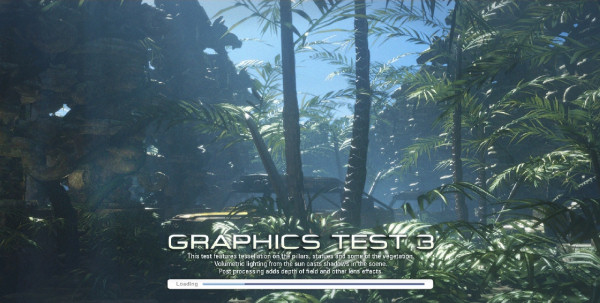
3DMark 11 is the latest version of the world's most popular benchmark. Designed to measure your PC's gaming performance 3DMark 11 makes extensive use of all the new features in DirectX 11 including tessellation, compute shaders and multi-threading. Trusted by gamers worldwide to give accurate and unbiased results, 3DMark 11 is the best way to consistently and reliably test DirectX 11 under game-like loads.

3DMark 11 straight away shows some strong performance gains against both the reference clocked card and the same card when overclocked. You can see in this instance, though, we're not quite at GTX 780 level performance.
As we move forward we may start to see the overclocked EVGA GTX 770 2GB SuperClocked ACX close the gap.
Benchmarks - 3DMark Fire Strike
3DMark Fire Strike
Version and / or Patch Used: 1
Developer Homepage: http://www.futuremark.com
Product Homepage: http://www.futuremark.com/benchmarks/3dmark
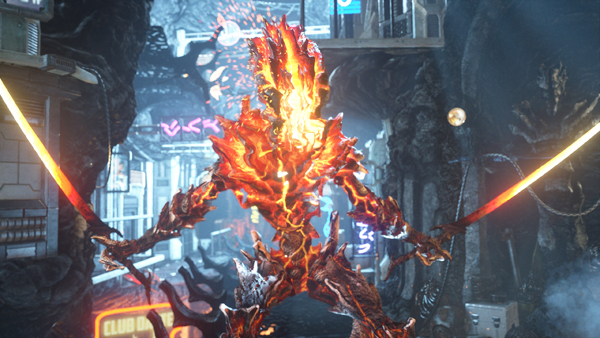
Fire Strike is our new showcase DirectX 11 benchmark designed for high-performance gaming PCs. It is our most ambitious and technical benchmark ever, featuring real-time graphics rendered with detail and complexity far beyond what is found in other benchmarks and games today. Fire Strike will only be available in the Windows editions of 3DMark initially.

Fire Strike is a new addition to our benchmark line up and for that reason we don't have any results here against any of the other cards we've tested. Of course in the next few weeks we'll see this graph expand quickly as we test more and more video cards.
Benchmarks - Unigine Heaven Benchmark
Unigine Heaven Benchmark
Version and / or Patch Used: 3
Developer Homepage: http://www.unigine.com
Product Homepage: http://unigine.com/press-releases/091022-heaven_benchmark//
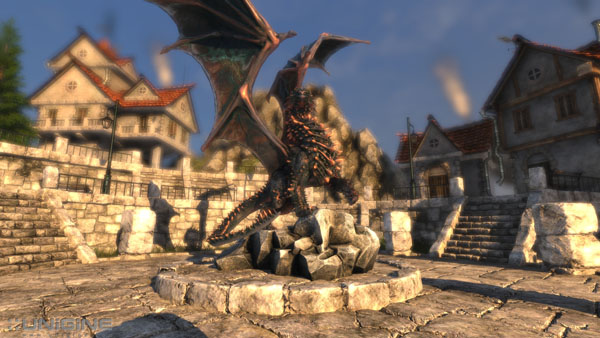
New benchmark grants the power to unleash the DirectX 11 potential in the gift wrapping of impressively towering graphics capabilities. It reveals the enchanting magic of floating islands with a tiny village hidden in the cloudy skies. With the interactive mode emerging experience of exploring the intricate world is ensured within reach. Through its advanced renderer, Unigine is one of the first to set precedence in showcasing the art assets with tessellation, bringing compelling visual finesse, utilizing the technology to the full extend and exhibiting the possibilities of enriching 3D gaming.

Moving on into Heaven you can see the overclock we've managed to achieve here with the EVGA GTX 770 2GB SuperClocked ACX managing to push up past the reference clocked GTX 780 3GB. This is just the kind of thing we love seeing when we start overclocking.
Benchmarks - Phantasy Star Online 2
Phantasy Star Online 2
Version and / or Patch Used: Standalone Benchmark
Timedemo or Level Used: Built in Benchmark
Developer Homepage: http://www.sega.com/?t=EnglishUSA
Product Homepage: http://www.pso2.com/us/html/index.html
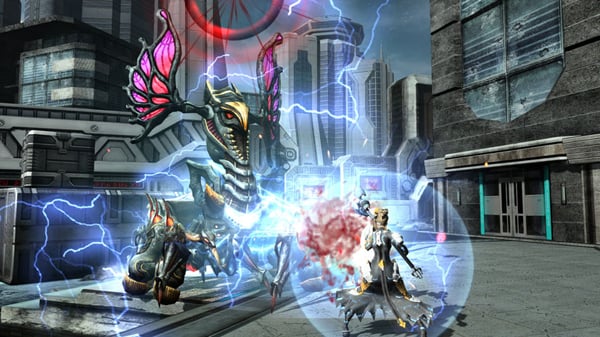
Play Phantasy Star Online 2 and experience revolutionary combat in an action-driven, free-to-play multiplayer online RPG from SEGA. Take a journey into an immersive sci-fi fantasy narrative and explore mysterious worlds to unravel their secrets. Join fellow adventurers and fight against the legions of darkness to banish them from the galaxy.
Score explanation: Less than 2000: Please adjust your game settings because the processing load is quite heavy.
2000 through 5000: The game runs fine at the setting, if you have room, you can adjust some settings.
5001+: The game works wonderfully at this setting.

PSO2 is just one of those games that sees massive performance gains when it comes to overclocking. Here is no different, and just like with Heaven, you can see that the overclock helps boost performance past the reference clocked GTX 770 3GB again.
Benchmarks - Lost Planet 2
Lost Planet 2
Version and / or Patch Used: Standalone Benchmark
Timedemo or Level Used: Built in Benchmark - Test A Scene 1
Developer Homepage: http://www.capcom.com/
Product Homepage: http://www.lostplanet2game.com/
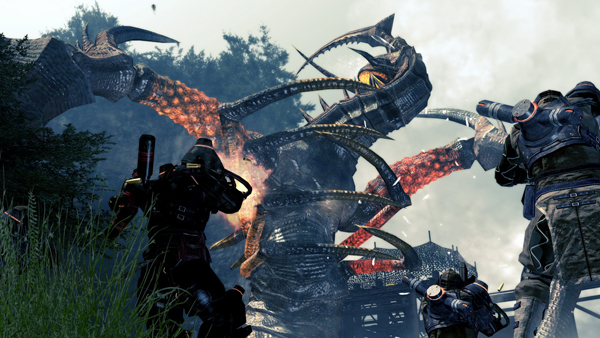
Lost Planet 2 is a third-person shooter video game developed and published by Capcom. The game is the sequel to Lost Planet: Extreme Condition which is also made by Capcom, taking place ten years after the events of the first game, on the same fictional planet. The story takes place back on E.D.N. III 10 years after the events of the first game. The snow has melted to reveal jungles and more tropical areas that have taken the place of more frozen regions. The plot begins with Mercenaries fighting against Jungle Pirates. After destroying a mine, the Mercenaries continue on to evacuate the area, in which a Category-G Akrid appears and attacks them. After being rescued, they find out their evacuation point (Where the Category-G appeared) was a set-up and no pick up team awaited them. The last words imply possible DLC additions to the game, "There's nothing to be gained by wiping out snow pirates... unless you had some kind of grudge."
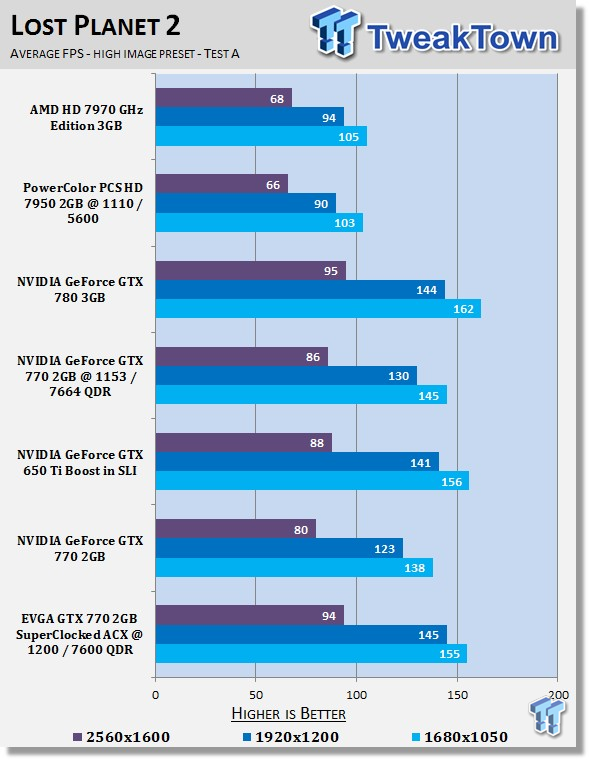
Getting into some more games we can again see some strong gains again that really separate the EVGA GTX 770 2GB SuperClocked ACX from the other GTX 770 2GB setups that we've got here. Compared to the reference clocked GTX 780 3GB, you can see that performance is very close across the board with little separating them.
Benchmarks - Just Cause 2
Just Cause 2
Version and / or Patch Used: Latest Steam Update
Timedemo or Level Used: Dark Tower
Developer Homepage: http://www.eidos.com/
Product Homepage: http://www.justcause.com/
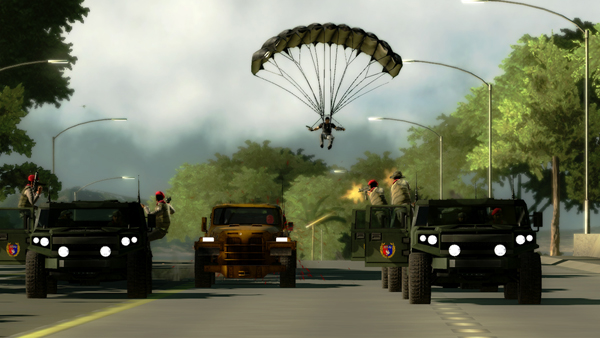
Just Cause 2 employs the Avalanche Engine 2.0, an updated version of the engine used in Just Cause. The game is set on the other side of the world from the original Just Cause, on the fictional island of Panau in Southeast Asia. Panau has varied terrain, from desert to alpine to rainforest. Rico Rodriguez returns as the protagonist, aiming to overthrow the evil dictator Pandak "Baby" Panay and confront his former mentor, Tom Sheldon.

Just Cause 2 performance is really strong across the board and like we've seen in both Heaven and PSO2, you can see that overclocked the EVGA GTX 770 2GB SuperClocked ACX manages to pull out a win against not just the reference GTX 780 3GB, but also everything else that is placed in front of it.
Benchmarks - F1 2012
F1 2012
Version and / or Patch Used: Latest Steam Update
Timedemo or Level Used: Built in Benchmark
Developer Homepage: http://www.codemasters.com/uk/
Product Homepage: http://www.codemasters.com
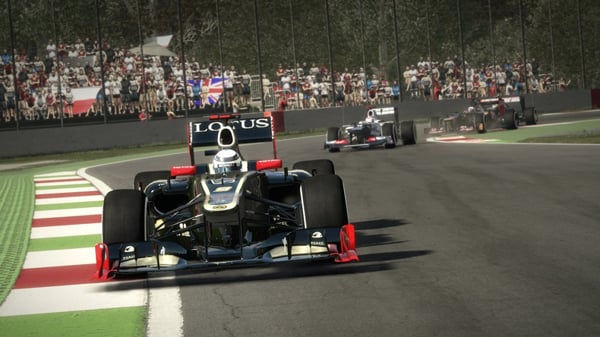
In F1 2012 players will feel the unparalleled thrill of becoming a FORMULA ONE driver with a host of new features, wide-ranging technical and gameplay advancements and extensive competitive and co-operative multiplayer components. F1 2012 will feature all of the official teams, drivers and circuits from the 2012 FIA FORMULA ONE WORLD CHAMPIONSHIP, including the debut of the 2012 FORMULA 1 UNITED STATES GRAND PRIX at Austin, Texas and the return of Germany's famous Hockenheim circuit to the calendar.

At the lower resolution you can see the high-end GTX 700 offerings perform very close to each other due to the FPS wall we hit at around the 150 FPS mark. It's not until we get to 2560 x 1600 that we see the cards start to become separated. Again, though, you can see that this overclocked EVGA card is able to outperform all the other setups here.
Benchmarks - Metro Last Light
Metro Last Light
Version and / or Patch Used: Latest Steam Update
Timedemo or Level Used: Built in Benchmark
Developer Homepage: http://www.4a-games.com/
Product Homepage: http://www.enterthemetro.com/
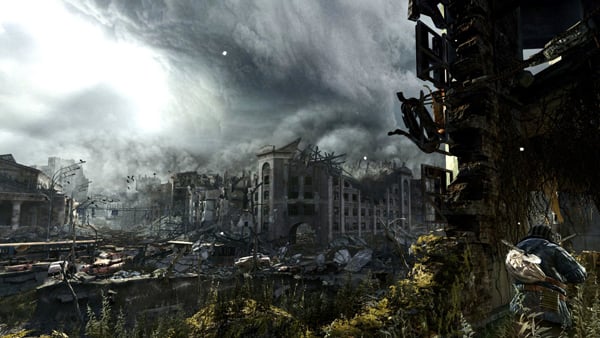
Metro: Last Light takes place one year after the events of Metro 2033, proceeding from the ending where Artyom chose to call down the missile strike on the Dark Ones. The Rangers have since occupied the D6 military facility, with Artyom having become an official member of the group. Khan, the nomad mystic, arrives at D6 to inform Artyom and the Rangers that a single Dark One survived the missile strike. Khan believes the Dark One is the key to humanity's future, and wants to make peace with it, while Ranger leader Colonel Miller wants to kill the creature due to its potential threat. Miller sends Artyom to the surface with a mission to kill the Dark One; he is accompanied by Anna, Miller's sarcastic daughter and the Rangers' best sniper.

Being the first time we've tested Metro Last Light which has replaced Metro 2033, we can't tell you too much from a comparison point of view.
You can see that we manage to get strong FPS at 1680 x 1050, but past that we fall below the 60 FPS number we're always on the hunt for to provide a solid gaming experience. While we're not too far behind that number at 1920 x 1200, you can see we dip way into the 30 FPS area at the highest resolution.
Benchmarks - Dirt Showdown
Dirt Showdown
Version and / or Patch Used: Latest Steam Update
Timedemo or Level Used: Built in Benchmark
Developer Homepage: http://www.codemasters.com/uk/
Product Homepage: http://www.codemasters.com/uk/dirtshowdown/360/
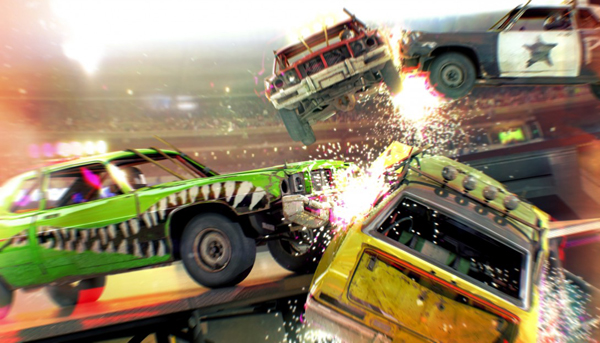
DiRT Showdown is the new arcade racing game from the team that brought you the award-winning DiRT series, uncaged in 2012. Pick up and play controls combine with electrifying events, frenzied crowds and stunning graphics to deliver high octane, dive in and drive thrills from event one.

Dirt Showdown performance looks good here and you can see that the EVGA GTX 770 2GB SuperClocked ACX when overclocked is the only GTX 770 2GB that is able to break the 60 FPS mark at the higher 2560 x 1600 resolution. Compared to the reference clocked GTX 780 3GB, you can see we're trailing behind by a few FPS at all resolutions.
Benchmarks - Nexuiz
Nexuiz
Version and / or Patch Used: Latest Steam Update
Timedemo or Level Used: Built in Benchmark
Developer Homepage: http://www.alientrap.org/
Product Homepage: http://www.nexuiz.com/
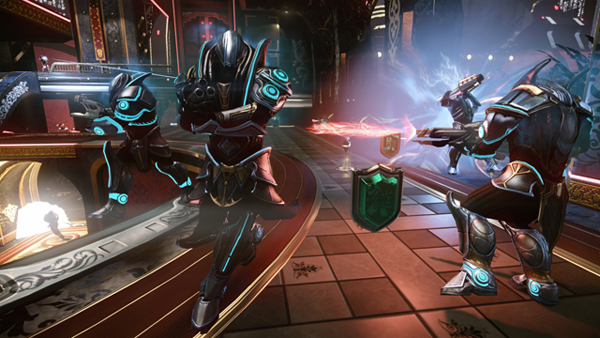
Nexuiz is an Arena First Person shooter coming soon to consoles. Nexuiz is fast paced with extremely competitive game play. IllFonic brings Alientrap Software's Nexuiz to next-gen gaming consoles around the world while staying true to the game play refined over the years through development. IllFonic introduces a new Victorian influenced art style that is simultaneously futuristic and sophisticated. Nexuiz for consoles is powered by CryENGINE 3.

While we manage to really see some strong gains here compared to the reference clocked card, you can see on a whole the performance figures are just too low. The only card here that manages to break past the 60 FPS area is the GTX 780 with its larger amount of memory and fatter memory bus.
Benchmarks - Sniper Elite V2
Sniper Elite V2
Version and / or Patch Used: Standalone Benchmark
Timedemo or Level Used: Built in Benchmark
Developer Homepage: http://www.rebellion.co.uk/
Product Homepage: http://sniperelitev2.com/us/age.html
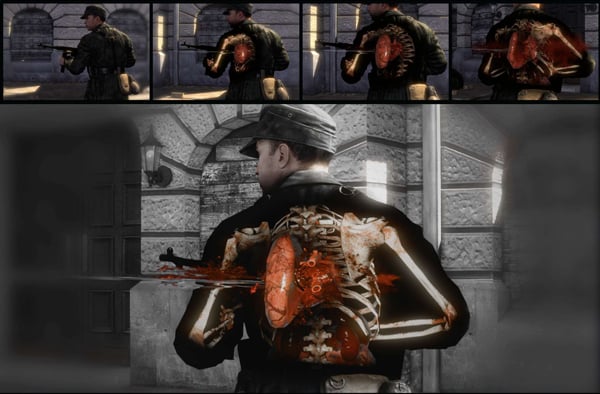
Sniper Elite V2 features detailed sniping simulation with advanced ballistics, taking into account gravity, wind, velocity, bullet penetration, aim stability and more. Guaranteed to provide players with the most realistic simulation of military sharpshooting yet available.

Again we're seeing some great performance gains under Sniper Elite V2 and you can see that at 1920 x 1200 and 2560 x 1600 performance between the EVGA GTX 770 2GB SuperClocked ACX and GTX 780 3GB are identical.
Benchmarks - Sleeping Dogs
Sleeping Dogs
Version and / or Patch Used: Latest Steam Update
Timedemo or Level Used: Built in Benchmark
Developer Homepage: http://eu.square-enix.com/en
Product Homepage: http://www.sleepingdogs.net/
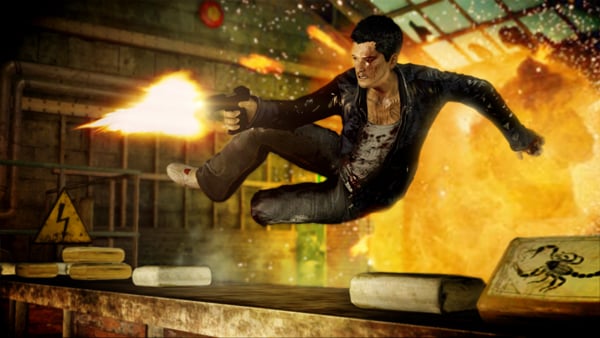
The core gameplay of Sleeping Dogs consists of giving the player an open world environment in which to move around freely. Sleeping Dogs is played as an over-the-shoulder, third-person perspective action-adventure game with role-playing elements. The player controls Wei Shen, a Chinese-American police officer, as he goes undercover to infiltrate the Sun On Yee Triad organization. On foot, the player character has the ability to walk, run, jump, climb over obstacles and swim, as well as use weapons and martial arts in combat. Players also drive a variety of vehicles including cars, boats, and motorcycles.

Sleeping Dogs sees not only some great performance gains and very playable numbers, but overall numbers that manage to put this video card ahead of the GTX 780 3GB at all resolutions.
Benchmarks - Far Cry 2
Far Cry 2
Version and / or Patch Used: 1.01
Timedemo or Level Used: Ranch Long
Developer Homepage: http://www.ubi.com/
Product Homepage: http://www.farcry2.com/
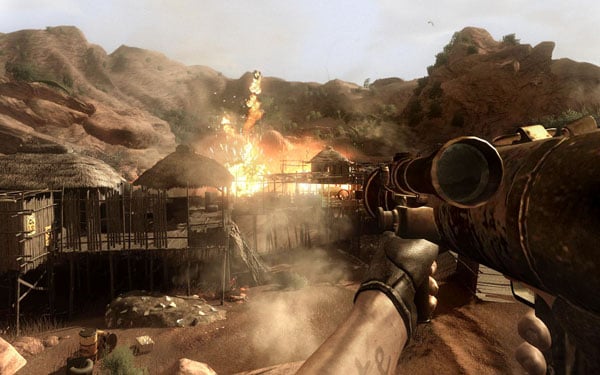
The Dunia Engine was built specifically for Far Cry 2 by the award-winning Ubisoft Montreal development team. It delivers the most realistic destructible environments, amazing special effects such as dynamic fire propagation and storm effects, real-time night-and-day cycle, dynamic music system, non-scripted enemy A.I. and so much more.

You can see across the board numbers are strong as you'd expect. There's really not a lot of need to go into a large amount of detail here as we've just got very strong performance that equates to a very playable game.
Benchmarks - Hitman Absolution
Hitman Absolution
Version and / or Patch Used: Latest Steam Update
Timedemo or Level Used: Built in Benchmark
Developer Homepage: http://www.ioi.dk/
Product Homepage: http://hitman.com/
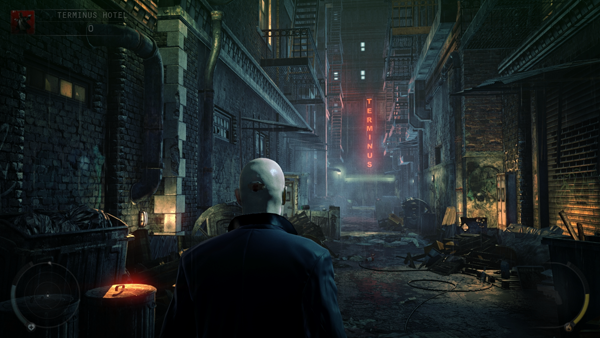
Hitman: Absolution is an action-adventure stealth game developed by I/O Interactive and published by Square Enix. It is the fifth entry in the Hitman game series, and runs on I/O Interactive's proprietary Glacier 2 game engine. Before release, the developers stated that Absolution would be easier to play and more accessible, while still retaining hardcore aspects of the franchise. The game was released on 20 November 2012, which is in the 47th week of the year (in reference to the protagonist, Agent 47).

Hitman Absolution hits the mid-50 FPS minimum wall and 69 FPS average wall at almost all resolutions. While falling a little shy of both numbers at the highest resolution, the 52 FPS minimum and 62 FPS average equate to a good gaming experience still.
Benchmarks - Tomb Raider
Tomb Raider
Version and / or Patch Used: Latest Steam Update
Timedemo or Level Used: Built in Benchmark
Developer Homepage: http://www.nixxes.com/
Product Homepage: http://www.tombraider.com/us/base/agegate?refer=184&
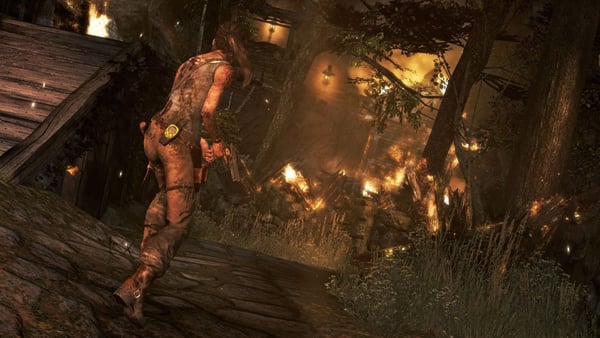
Tomb Raider is an action-adventure platform video game. Published by Square Enix, Tomb Raider is the fifth title developed by Crystal Dynamics in the Tomb Raider franchise. As the first entry in a new Tomb Raider continuity, the game is a reboot that emphasizes the reconstructed origins of the culturally influential lead character Lara Croft. Tomb Raider was released on 5 March 2013 for PlayStation 3, Xbox 360 and Microsoft Windows to universal critical acclaim.

While we've got some good gains against the reference GTX 770 2GB setups, you can see we still fall a little shy at all resolutions when compared to the GTX 780 3GB. Saying that, we've got playable numbers at both 1680 x 1050 and 1920 x 1200.
Moving to 2560 x 1600, though, you can see just like the GTX 780 3GB, while the minimum looks good at 32 FPS, the average FPS in the 40 FPS realm is just a little too low.
Benchmarks - BioShock Infinite
BioShock Infinite
Version and / or Patch Used: Latest Steam Update
Timedemo or Level Used: Built in Benchmark
Developer Homepage: http://irrationalgames.com/
Product Homepage: http://www.bioshockinfinite.com
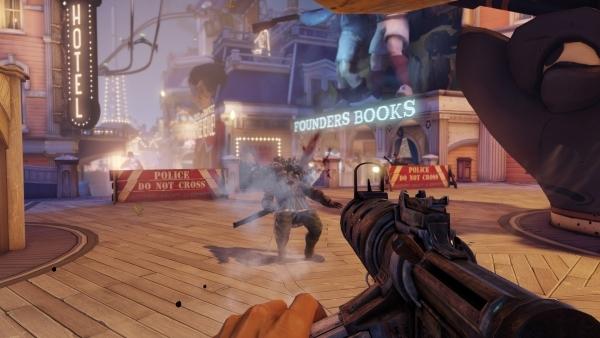
BioShock Infinite is a first-person shooter video game and the third installment in the BioShock series. Previously known as "Project Icarus", it is being developed by Irrational Games and was released worldwide on the Microsoft Windows, PlayStation 3, and Xbox 360 platforms on March 26, 2013. BioShock Infinite is not part of the storyline of previous BioShock games but features similar gameplay concepts and themes.

BioShock Infinite sees some good performance bumps that helps separate the EVGA GTX 770 2GB SuperClocked ACX from the reference GTX 770 2GB setups. While we also manage to get a strong 7 FPS gain over the reference clocked card, you can see we're still shy of the 60 FPS number at the highest resolution, which means like the GTX 780 3GB, we've got playable FPS at both 1680 x 1050 and 1920 x 1200, but fall short at the higher 2560 x 1600 resolution.
Benchmarks - High Quality AA and AF
High Quality AA and AF
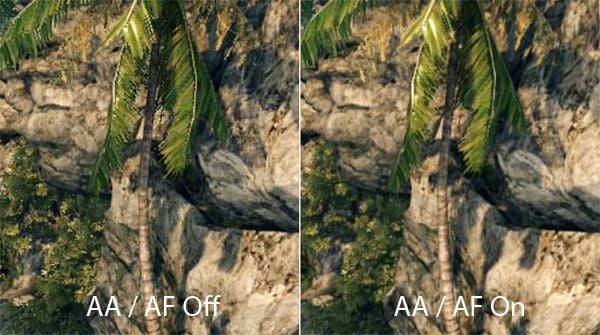
While we test all our games with maximum in-game settings, turning on Anti-Aliasing (AA) and Antistrophic Filtering (AF) helps take the intensity of our testing to another level.
Here we see video cards go from playable FPS to an unplayable FPS and the real power houses continue to help break that 60 FPS mark we always aim for to provide a smooth gaming experience.

We see strong performance under Far Cry 2, even with AA and AF on.

From a comparisons sake, we can't say much here under Metro Last Light as it's the first card to be tested under these circumstances. We can say, though, that this is clearly an intensive benchmark as we see numbers well below the 60 FPS region.

Looking at Just Cause 2 we really see some strong performance numbers at both resolutions which puts this video card almost on top of the GTX 780 3GB. More importantly, though, the extra 10 FPS at 2560 x 1600 against the reference card and 6 FPS at the same resolution against the same card overclocked means we're now in the 60 FPS region turning what we would consider unplayable to playable.

Sleeping Dogs really sees some fantastic gains, and you can see against the GTX 780 3GB, the numbers are actually ahead at both resolutions. We're still below the 60 FPS number we want at both resolutions falling 6 FPS shy at 1920 x 1200 and almost 30 FPS shy at 2560 x 1600.
Temperature Test

The temperature of the core is pulled from MSI Afterburner with the max reading used after a completed run off 3DMark Vantage and the Performance preset.

At idle the EVGA GTX 770 2GB SuperClocked ACX performs well sitting at just 34c. At load, though, you can see it falls in line with a lot of our other GTX 700 cards sitting in the 80c region.
This is pretty much what we're seeing from most GTX 700 series cards due to the way the profiles have been set up.
Sound Test

Pulling out the TES 1350A Sound Level Meter we find ourselves quickly yelling into the top of it to see how loud we can be.
After five minutes of that we get a bit more serious and place the device two CM away from the fan on the card to find the maximum noise level of the card when idle (2D mode) and in load (3D mode).

Noise levels move into the top half of the graph. Overall, though, this 64.3 dB at load isn't a number that concerns us too much - especially when we consider the amount of performance coming out of this single GPU solution.
Power Consumption Test

Using our PROVA Power Analyzer WM-01 or "Power Thingy" as it has become quickly known as to our readers, we are now able to find out what kind of power is being used by our test system and the associated graphics cards installed. Keep in mind; it tests the complete system (minus LCD monitor, which is plugged directly into AC wall socket).
There are a few important notes to remember though; while our maximum power is taken in 3DMark06 at the same exact point, we have seen in particular tests the power being drawn as much as 10% more. We test at the exact same stage every time; therefore tests should be very consistent and accurate.
The other thing to remember is that our test system is bare minimum - only a SSD hard drive is used with a single CD ROM and minimal cooling fans.
So while the system might draw 400 watts in our test system, placing it into your own PC with a number of other items, the draw is going to be higher.

Power draw continues to be strong on the new GTX 700 series cards, and you can see this EVGA video card sitting just above 400 watts at load. This is actually slightly lower than the reference clocked card, which comes in at 419 watts.
Pricing, Availability and Final Thoughts
Priced at $419.99 at the time of writing, the EVGA GTX 770 2GB SuperClocked ACX comes in $20 more expensive than roughly half of the GTX 770 offerings that are available at Newegg, which hit at the $399.99 price point that NVIDIA said we'd see these video cards start from. Saying that, it comes in $30 cheaper than offerings seen from other companies which come out of the box overclocked only slightly higher.
EVGA has done a really good job with the pricing of this model. The new ACX cooler is great, we love the look of it and it clearly does a good job, as it helps push an overclock that is much stronger than the reference cooled version. I think what's really important here, though, is the $200 price difference between this model and the GTX 780 3GB.
The GTX 770 2GB represents some really good value, especially when you throw overclocking into the mix. Of course when you add a superior cooler like the ACX one we've seen today from EVGA, the value jumps up even more as we can see firsthand how much stronger overclocking is when we move away from the reference cooler.
In the event that you don't want to overclock, the good news is that EVGA really has done a wonderful job overclocking the card out of the box. As we mentioned earlier, the core on the EVGA GTX 770 2GB SuperClocked ACX comes in at 1111MHz, which is up from the stock 1046MHz. Of course that means the boost clock has also been increased from the standard 1085MHz to a more impressive 1163MHz. This is a really nice out of the box overclock and really if you don't want to mess around with overclocking, you can know that you're getting a strong performing video card, without having to do nothing more than installing the driver.
We see little reason to buy a reference designed GTX 770. Instead we'd recommend that you spend the extra money associated with something like the EVGA GTX 770 2GB SuperClocked ACX and get a video card that looks great, performs well out of the box and has even more performance potential thanks to its high quality cooler.

